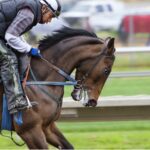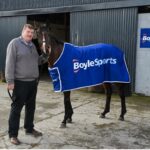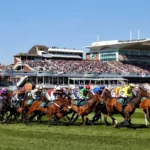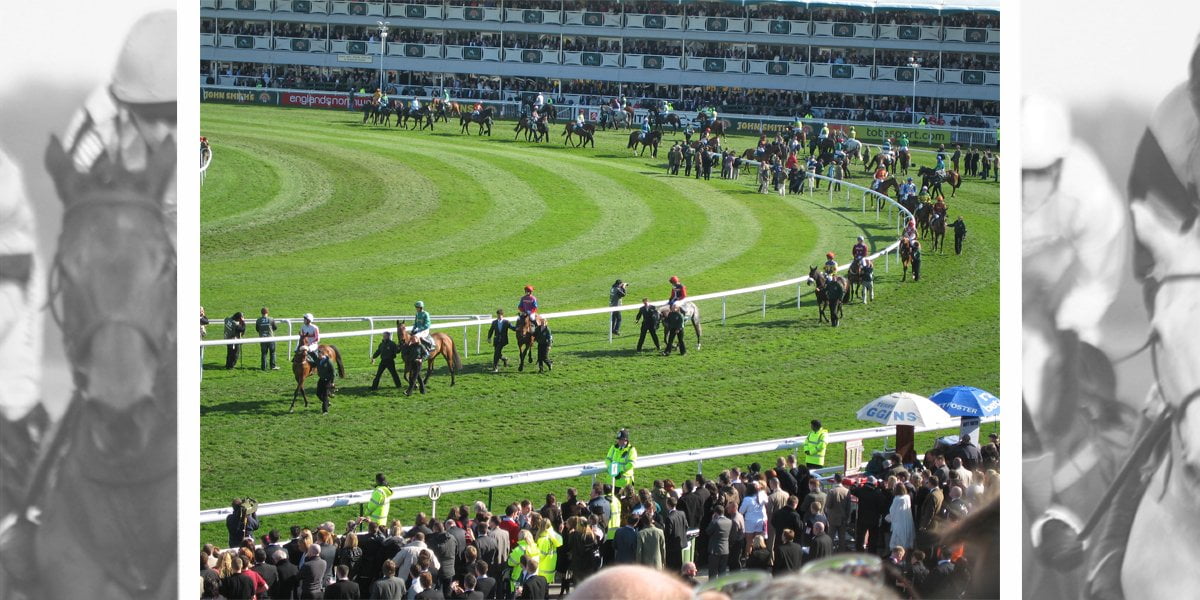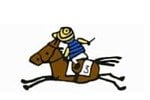Aintree’s Grand National is now the ‘world’s greatest race’? But as well as hosting a base for US troops and a motor-racing circuit, it came close to being lost forever…
Facts courtesy of Aintree Racecourse.
1930
By an unknown sire and initially sold for a mere 20 guineas, the 1929 Grand Sefton winner Shaun Goilin was a well-backed second-favourite when scoring for local cotton broker Mr Midwood.
1931
Grakle won at the fifth attempt in the year that the tote first operated at Aintree. Her was trainer Tom Coulthwaite’s third success after Eremon (1907) and Jenkinstown (1910).
1932
Tom Rimell trained 50/1 chance Forbra to win. Rimell’s son Fred went on to send out four winners of the race, a joint-record.
1933
Kellsboro’ Jack beat 33 rivals to give his owner Florence Clark a famous victory. Her husband, American millionaire F Ambrose Clark, had sold the winner to his wife for just £1 to try and generate a change in luck. The legendary Golden Miller, who was sent off 9/1 favourite, got rid of his jockey at the Canal Turn.
1934
Golden Miller, who carried 12st 2lb, became the only horse to win the Grand National and the Cheltenham Gold Cup in the same season. The winning time of 9m 20.4s at Aintree created a new record, which stood until Red Rum’s first victory in 1973. This was the only occasion Golden Miller completed the Grand National course in five attempts.
1935
Mirabel Topham – who went on to be an integral figure in Grand National history – became a director of racecourse lessees Topham Ltd and chairman two years later. The former actress Mirabel Hillier married Arthur Ronald Topham in 1922. Following his brother’s death in 1932, Arthur Topham had taken over chairmanship of the family company that had overseen the Grand National since 1839. Golden Miller was again expected to be the star at Aintree, but Dorothy Paget’s champion – at 2/1 the shortest-priced Grand National runner ever – unseated his rider and it was Reynoldstown, owned and trained by Noel Furlong, who prevailed. Furlong’s amateur son Frank was in the saddle.
1936
Reynoldstown, defying 12st 2lb, became the sixth horse to win more than one Grand National. With a fifth Cheltenham Gold Cup under his belt, Golden Miller returned for another attempt at the Grand National but was brought down at the first. The race was reduced to a duel between Reynoldstown and outsider Davy Jones. Reynoldstown’s careless jumping meant that Davy Jones looked the certain winner. But the latter’s reins came apart leaving his jockey with no control and, as he veered violently left, Reynoldstown passed him to gain a 12-length victory under amateur Fulke Walwyn.
1937
King George VI and Queen Elizabeth visited Aintree Racecourse for the first time.
1938
17-year-old Bruce Hobbs became the youngest winning jockey when steering Battleship home. He was subsequently a Classic winning trainer on the Flat.
1939
Workman triumphed under Irishman Timmy Hyde, who was having only his second ride in the race. The Jack Ruttle-trained nine-year-old became the 12th Irish winner.
1940
The Lord Stalbridge-trained/owned Bogskar won the final Grand National before World War II stopped the event between 1941 and 1945.
1941–1945
Aintree was used as a base for American troops.
1946
Lovely Cottage was successful in the first post-World War II Grand National and became the 100th Grand National winner at Aintree.
1947
The Grand National was switched to Saturday for the first time at the request of Prime Minister Clement Attlee, who reckoned that the new date would be “in the interests of British industry”. The Irish-trained Caughoo, the 13th winner from across the Irish Sea, prevailed at odds of 100/1 in gloomy conditions, despite protestations that the winning jockey Eddie Dempsey had taken a short cut in the fog.
1948
50/1 chance Sheila’s Cottage, trained by Neville Crump, became the first mare to win the Grand National for 46 years and the 12th in all. The bad-tempered nine-year-old celebrated by biting the tip off one of the fingers of winning jockey Arthur Thompson at a photo-shoot two days later.
1949
Tophams Ltd purchased Aintree racecourse from Lord Sefton for £275,000. Mirabel Topham expanded the Grand National meeting to four days and created the Topham Chase, run over one circuit of the National course. The Fox Hunters’ was contested over the same course and distance as the Grand National for the last time.
1950
Her Majesty, Queen Elizabeth, (who became Queen Mother on the death of her husband in 1952) had her first runner. Monaveen, jointly owned by Princess Elizabeth (the present Queen), finished fifth behind the Bobby Renton-trained Freebooter.
1951
The Jack O’Donoghue-trained Nickel Coin, partnered by Johnny Bullock, was the 13th and latest mare to win the Grand National and none has triumphed since. The first fence caused 11 horses to lose their riders.
1952
Teal gave trainer Neville Crump and jockey Arthur Thompson a second Grand National win, following Sheila’s Cottage in 1948. Ten of the 47 runners came down at the first fence and, following a dispute with the BBC over copyright, Mirabel Topham employed her own commentators for the radio broadcast. Listeners were told that Teal had departed at the first obstacle.
1953
Trainer Vincent O’Brien gained the first of three successive winners, courtesy of Early Mist. O’Brien – who subsequently saddled six Epsom Derby winners and is regarded by many as the greatest trainer ever – went on to score with Royal Tan in 1954 and Quare Times a year later. They were the 14th, 15th and 16th Irish-trained winners. The Mildmay Course, the brainchild of Mirabel Topham, held its first races. The course, which stages races over conventional fences and hurdles, was named after Lord Mildmay, an amateur jockey and great supporter of the Grand National.
1954
The construction of the motor-racing circuit, which still circles the Grand National course, began. The circuit was another of Mrs Topham’s innovations. It hosted a European Grand Prix and five British Grand Prix. Stirling Moss won his first Grand Prix there in 1955 and was also victorious in both 1957 and 1959. The 1961 British Grand Prix went to Wolfgang von Trips and Jim Clark took the final one to be staged at Aintree in 1962.
1955
Due to heavy rain, the water jump was omitted for the first time in the Grand National’s history. Quare Times gave Vincent O’Brien his third victory in as many years. The bad weather ensured the attendance was low.
1956
The race was remembered more for the defeat of Devon Loch than the success of the Fred Rimell-trained E.S.B. Owned by Her Majesty, the Queen Mother, Devon Loch had the race won when he inexplicably gave a half-leap just 50 yards from the finish, sprawling and unseating unfortunate jockey Dick Francis, who later became a famous thriller writer.
1957
The Grand National returned to Friday temporarily in an attempt to reverse falling attendances.
1958
The Grand National received sponsorship for the first time, with the Irish Hospital Sweepstakes putting up £5,000 towards the prize money, meaning the race was worth a record £13,719 to the winning owner. Mr What, an eight-year- old novice trained in Ireland by Tom Taaffe and ridden by Arthur Freeman, relished the soft conditions and scored easily by 30 lengths. He was the 17th Irish scorer.
1959
Tim Brookshaw rode Wyndburgh without irons after a stirrup broke at Becher’s on the second circuit. Despite his efforts, the pair could only finish second to Oxo, trained by Willie Stephenson and partnered by Michael Scudamore.
1960
The BBC televised the race for the first time, 33 years after the initial radio coverage. Peter O’Sullevan, Clive Graham and Peter Bromley were the commentators. Neville Crump trained his third and final Grand National winner, Merryman II, ridden by Gerry Scott, who acted as the Grand National starter in 1996. Crump was also successful with Sheila’s Cottage in 1948 and Teal four years later.
1961
Nicolaus Silver, trained by Fred Rimell and ridden by Bobby Beasley, became the second grey to win the Grand National – The Lamb was the first when successful in both 1868 and 1871. Nicolaus Silver was also the second of Rimell’s four Grand National winners, the first coming five years earlier through E.S.B. Soft drinks firm Schweppes was involved in the sponsorship in both 1961 and 1962.
1962
Fred Winter enjoyed his second Grand National victory aboard the Ryan Price-trained Kilmore, following his success on Sundew five years earlier. Wyndburgh, who was runner-up to Sundew, finished second in the race for the third time.
1963
Brewers Vaux became involved with the sponsorship of the Grand National and the race was run “for the Vaux Gold Tankard”. Hollywood actor Gregory Peck came to Aintree to witness his Owen’s Sedge finish seventh to Ayala, trained by Keith Piggott (Lester’s father), owned by hairdresser Pierre Raymond and ridden by Pat Buckley.
1964
Fulke Walwyn trained the Grand National winner when saddling Team Spirit to score at the horse’s fifth attempt. Walwyn rode Reynoldstown to victory as an amateur in 1936. Winning American co-owner Ronald Woodward had previously been stationed at the racecourse during the Second World War.
1965
Fred Winter also achieved the rare distinction of both riding and training a Grand National winner when saddling Jay Trump in his first year as a licence holder. Winter had partnered both Sundew in 1957 and Kilmore in 1962 as a rider and he trained another winner in 1966 with Anglo. It was announced that Aintree would be sold to a property developer, casting the future of the world’s greatest steeplechase into serious doubt.
1966
Paul McCartney celebrated at his local course after Drake’s Drum, who had been bought by the Beatle for his father, won a six-furlong Flat race on Grand National day. A name change proved not to be unlucky for Anglo, who won the feature contest having previously raced as Flag Of Convenience in his early years.
1967
Foinavon sensationally won in bizarre circumstances. At the smallest jump on the second circuit, the 23rd, the riderless Popham Down ran across the fence and caused a pile-up that almost brought the entire field to a standstill. John Buckingham, Foinavon’s jockey, was able to steer his mount wide of the mêlée because they were some way behind the leading group and he went on to win on the 100/1 outsider. The Aintree executive named the fence in honour of the winner who was the fourth horse to score at 100/1.
1968
Gregory Peck returned to see his Different Class finish third to runaway winner Red Alligator, partnered by Brian Fletcher, but another American stole the limelight. The 68-year-old “Galloping Grandad” Tim Durant remounted after Becher’s on the second circuit to come home 15th. The Yale graduate, himself a former Hollywood actor, won £500 for charity and a case of champagne after completing the race on his third attempt.
1969
Former Olympic showjumper Eddie Harty took the winning ride on the Toby Balding-trained Highland Wedding after regular pilot Owen McNally broke his elbow in the build-up to the race.
1970
Pat Taaffe, successful in the Grand National on Quare Times in 1955, landed a second victory aboard the Fred Rimell-trained Gay Trip, his last ride in the race.
1971
Specify beat Black Secret by a neck in one of the most exciting renewals. The winning horse was owned by holiday camp magnate Fred Pontin. Trevor Hemmings, who led a management buyout of Pontins in 1987, was so inspired by the victory of Specify that he became determined to win the Grand National, realising his dream with Hedgehunter in 2005, Ballabriggs in 2011 and Many Clouds in 2015.
1972
Heather Sumner, who died from cancer in 1971, bequeathed Well To Do to trainer Captain Tim Forster in her will. The nine-year-old beat Gay Trip by two lengths, while Black Secret and General Symons became the first horses to dead-heat for a place in the Grand National after the judge could not split them for third. Oil giant BP sponsored the race.
1973
The great Red Rum won the first of his three Grand Nationals – more than any other horse. He broke the course record time in the process, completing in 9m 1.9s. This was also the year that Brian Fletcher won the world’s most famous chase for the second time, having struck on Red Alligator in 1968, and he went on to score again on Red Rum in 1974. Aintree racecourse was finally sold for £3 million to property developer Bill Davies, who vowed to keep the race going.
1974
Red Rum followed up with a superb victory under top-weight of 12st, beating L’Escargot by seven lengths before going on to success in the Scottish Grand National just three weeks later. Brian Fletcher was in the saddle again and became the first jockey since amateur Jack Anthony 54 years earlier to ride three Grand National winners. Red Rum was the seventh horse to win the Grand National twice.
1975
L’Escargot emulated Golden Miller as only the second horse to win both the Cheltenham Gold Cup and the Grand National, albeit in different seasons, when beating Red Rum. He took the former race in both 1970 and 1971. Trained by Dan Moore and ridden by Tommy Carberry, he was the 18th Irish-trained winner. The attendance was the smallest in modern history after Bill Davies tripled admission prices. Bookmakers Ladbrokes stepped in and signed an agreement with Davies allowing them to manage the Grand National. The News Of The World newspaper sponsored for three years.
1976
Fred Rimell trained his fourth Grand National winner with Rag Trade, the second success for owner Pierre Raymond, overcoming Red Rum. Rimell’s other victories came through E.S.B. (1956), Nicolaus Silver (1961) and Gay Trip (1970), a record number later matched by Ginger McCain.

Karen can usually be found glued to her computer or at the stables. Having edited several national magazines she co-founded Eclipse Magazine in 2008 after realising that many of her friends were nervous about going racing due to lack of information – what to wear, how to bet etc.
She absolutely loves her job (how many people can say that?!) and is truly grateful to all supporters of and contributors to Eclipse Magazine.
If you are reading this she would like to say THANK YOU! (And please spread the word about Eclipse…!!)





